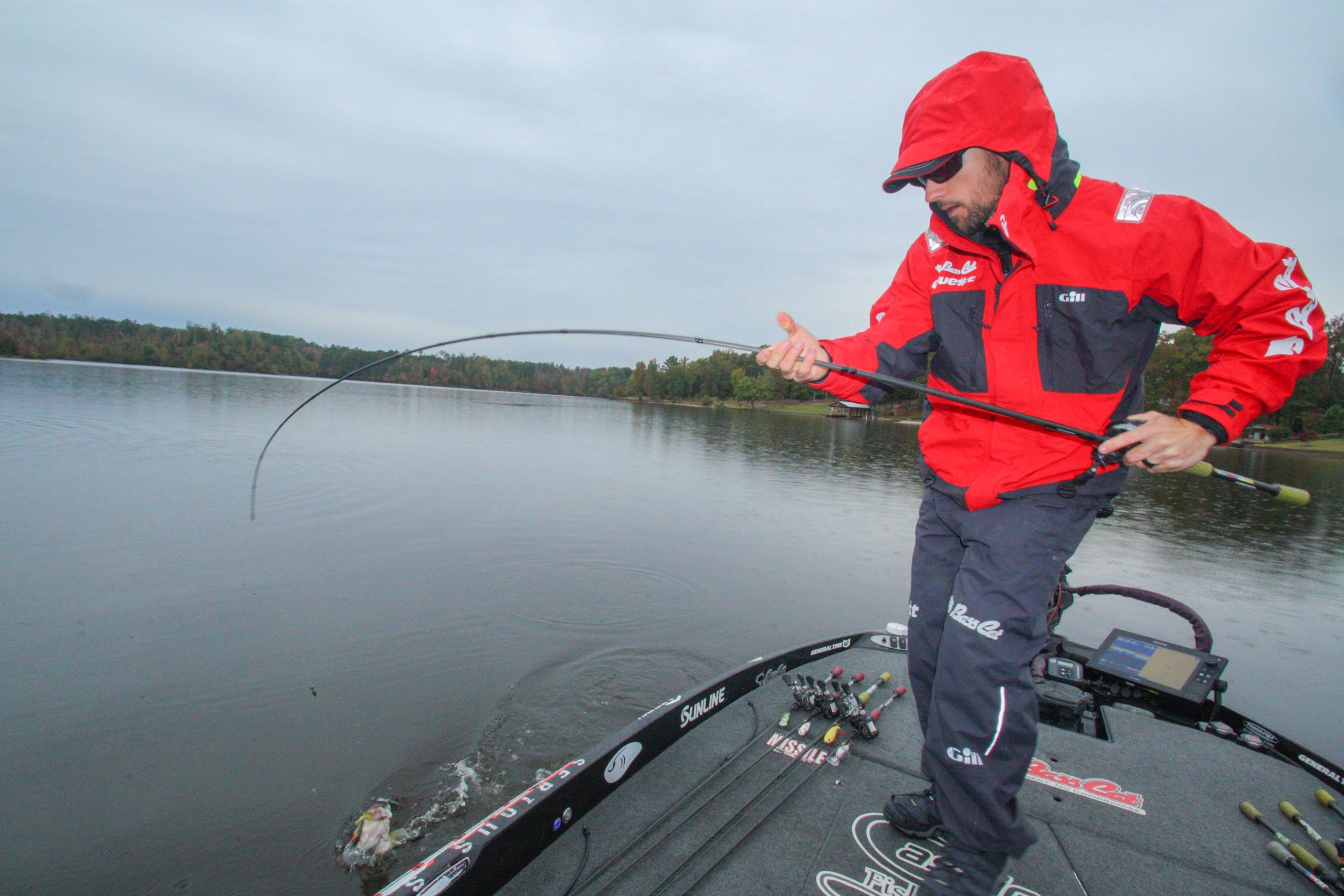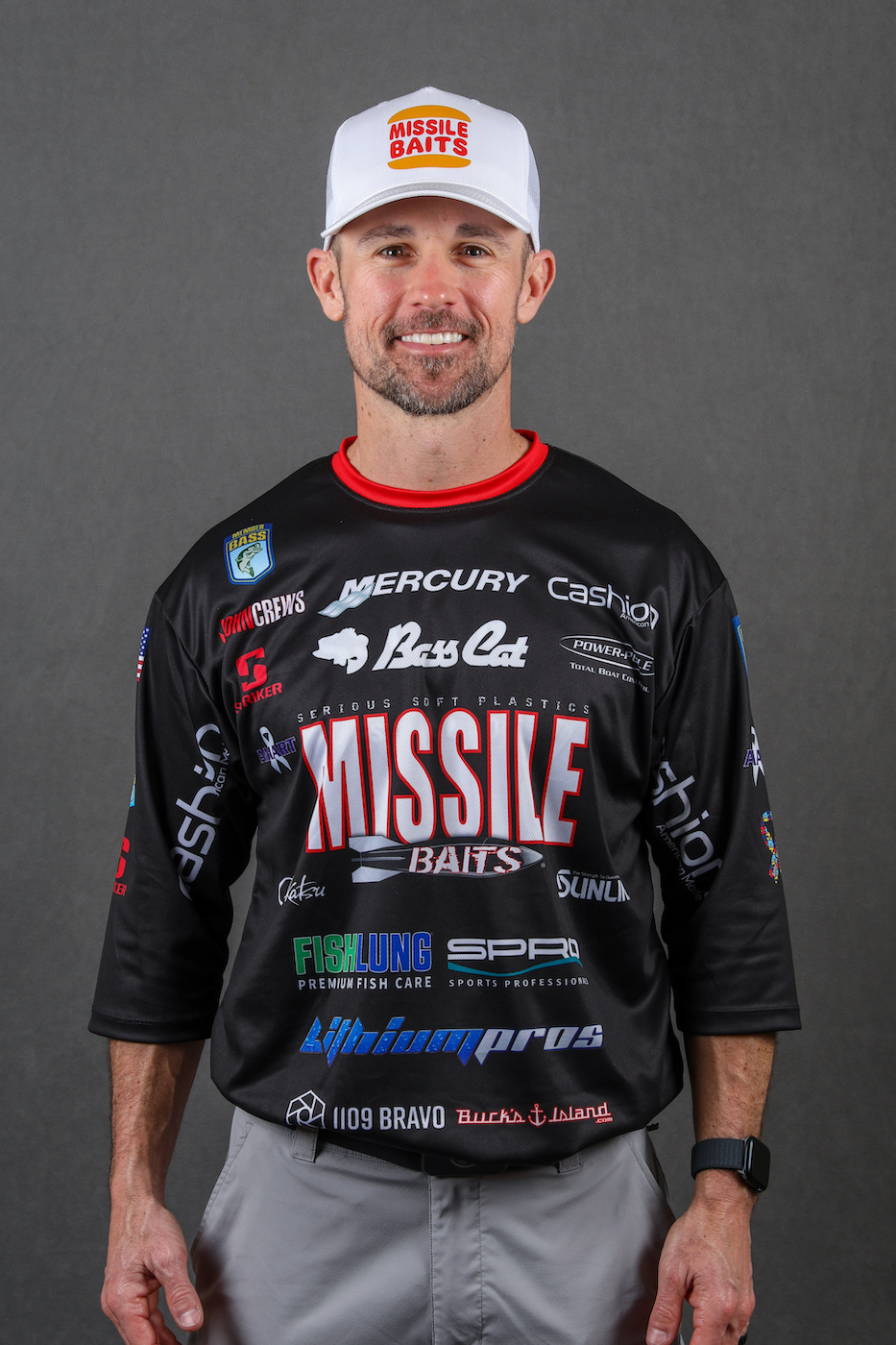
The fall turnover is nothing to ignore. We need to know that the turnover is when the upper layer of water in a lake gets cold enough and drops down below the previously cooler water below it. The lower, less oxygenated layer rises and mixes. That process turns the lake into a fishing mess — stale, oxygen depleted water that’s often oddly stained or tea colored.
Just because it’s nothing to ignore, however, doesn’t mean it has to be something that ruins your fishing. All you need to do to be successful is adjust your strategy and your tactics. Here’s how I do it…
Run, run and then run some more
All the water in bigger lakes rarely turns at the same time. There’s almost always some good water somewhere. It might be in the upper section, or it might be in the lower section, or it might be scattered around. But, it’s usually there. Our job as seasoned anglers is to find it. I do that by running around and looking.
One way to do that is to put your boat on the trailer and launch at a different part of the lake. The other way is to put the hammer down on your big motor. I do both depending on where I’m fishing and the weather.
It can get really cold in an open bass boat when you run for miles and miles so it might be better to trailer your rig. On the other hand, though, you’ll get a better look at the water from your boat. There’s no right or wrong here. It’s a matter of personal preference.
Either way, I sometimes go way up in the river(s) and as far back in the creeks as I can get. I’m looking for current in shallow areas. That water never stratifies.
I use a two-prong approach in these areas — a topwater plug and a shallow crankbait. My topwater options are either a buzzbait or Whopper Plopper 110. Both go well with a casting outfit and 30-pound-test Sunline X-Plasma braid.
My crankbait selection varies depending on how shallow I’m fishing. I will tell you, though, that I’ve caught hundreds of turnover bass on a SPRO Little John 50. The flashy shad colors like Chrome Olive or Citrus Shad are fish in the livewell.
There’s something else I want to mention that’s really important about going up where I like to go — safety. Lakes are down during the turnover. Some reservoirs drop as much as 15-20 feet or more. Areas and places that have plenty of water over them most of the year are now too shallow for even a bass boat. Running in those places can get hairy.
Hitting a big rock, stump or something else is no small thing. It can damage your boat, motor and wallet. You can risk serious injury by hitting an underwater object, too. Pay attention to what you’re doing and remember that you can always idle into areas that you are unsure about.
Go dirt shallow
During the turnover I’ve seen bass in the lower portions of lakes get dirt shallow. Many times they’re facing the bank. It looks to me like these are fish waiting on crawfish to get ready to hibernate along the shoreline. I’m not a biologist so I can’t say for sure, but baits that are successful strengthen my belief that this is true.
The sides and backs of the pockets are usually where this goes down. These shorelines might have, but don’t have to have, rocks along the bank.
I blind-cast a tiny jig or a Ned rig on or dang near right on the shoreline with little or no splash. Sometimes you can actually see the bass. If you spook them, come back later. Stay away from the bank and make long, blind casts. A little Missile Jigs Ike’s Micro Jig is one of my most effective lures.
This is spinning tackle fishing. I prefer a Cashion Rods Micro Jig Rod with a medium size spinning reel. I spool it with braid and a fluorocarbon leader. My braid is Sunline X-Plasma, 12-pound-test. My leader is Sunline FC Sniper, 8-pound-test.
A lighter Ned rig will also work with the same spinning outfit. The difference is the lure. A mushroom style jig head in the 1/16-ounce to 3/32-ounce range is what I’m talking about. I put a Missile Baits Ned Bomb on those heads. Fish this rig a little different. Lift and let the bait glide down instead of dragging or hopping it like you would with a micro jig.
The fall turnover is something to be aware of, and it requires some special preparation. However, it’s not something to fear. Look for it and know what adjustments to make. There’s a lot less pressure on our lakes in the late fall. Take advantage of that.





